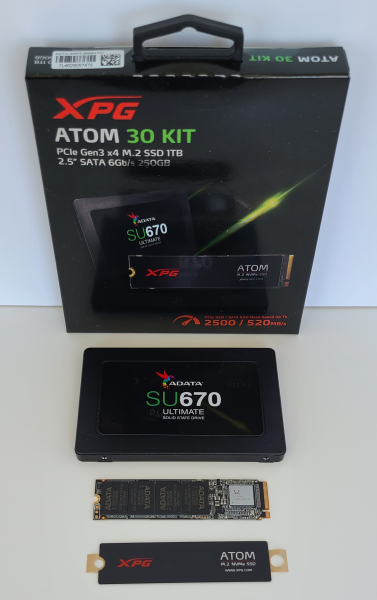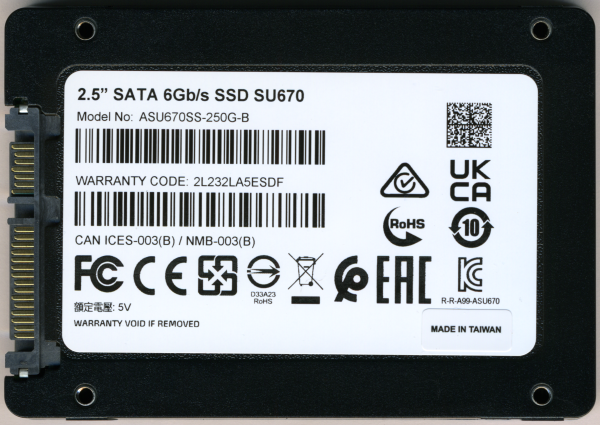The ATOM 30 kit comes in a small black box. Along with a picture of the drives, the front advertises a number of their key features including their 1TB and 250GB capacities, PCIe Gen 3 and SATA 6Gb/s interfaces and maximum read speeds. The back of the box provides a bit more information regarding the drives' features and performance. Inside, you'll find the two SSDs as well as a black, aluminum heatsink that can be attached to the ATOM 30.

Physical Features:
The ATOM 30 uses the 2280 form factor for M.2 (NGFF) SSDs. It measures 80 x 22 x 3.3 mm and weighs in at 9g. The drive also has an "M key" edge connector which provides PCIe SSDs with up to 4x lanes of bandwidth.

The ATOM 30 uses Realtek's RTS5766DL controller. Not much is known about this PCIe Gen 3 x4 controller aside from it having four channels and being DRAM-less.


For the 1TB version of the ATOM 30, ADATA has opted to use its own Micron manufactured 3D TLC NAND flash. Looking at the picture above, you can see that there are four 256GB NAND flash packages on top of the PCB. There is also no DRAM cache chip as the ATOM 30's RTS5766DL controller takes full advantage of NVMe's Host Memory Buffer feature by using a small portion of the computer's memory to cache the mapping tables.

The aluminum heatsink included with the ATOM 30 is simple, yet functional. It attaches to the top of the drive using thermal adhesive and has a small, yet measurable, impact on temperature.
The Ultimate SU670 looks very similar to ADATA's other 2.5-inch SSDs. The outer casing is made entirely out of black plastic with stickers on the top and bottom showing information like the model name, number and warranty code.


The SU670 uses Realtek's RTS5735DLQ controller. Aside from the fact that it is DRAM-less, very little is known about this controller at this time.


For the 250GB version of the SU670, ADATA has opted to use its own 3D MLC NAND flash. Looking at the pictures above, you can see that there are two 128GB NAND flash packages on the back of the PCB. Also take note that there is no DRAM cache chip. Instead, there is small DRAM cache embedded in the controller.



